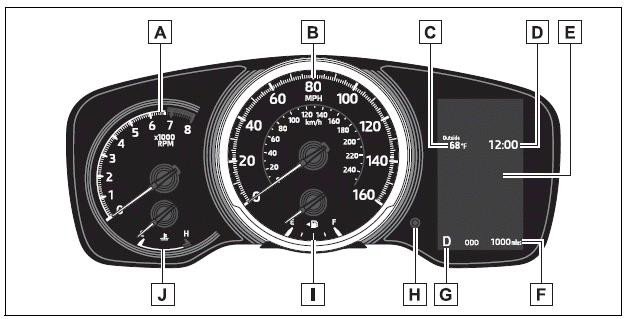Toyota Corolla: Do-it-yourself maintenance / Wheels
If a wheel is bent, cracked or heavily corroded, it should be replaced. Otherwise, the tire may separate from the wheel or cause a loss of handling control.
Wheel selection
When replacing wheels, care should be taken to ensure that they are equivalent to those removed in load capacity, diameter, rim width and inset*. Replacement wheels are available at your Toyota dealer.
Toyota does not recommend using the following:
- Wheels of different sizes or types
- Used wheels
- Bent wheels that have been straightened
■When replacing wheels (vehicles with a tire pressure warning system)
The wheels of your vehicle are equipped with tire pressure warning valves and transmitters that allow the tire pressure warning system to provide advance warning in the event of a loss in tire inflation pressure. Whenever wheels are replaced, the tire pressure warning valves and transmitters must be installed.
WARNING
■ When replacing wheels
- Do not use wheels that are a different size from those recommended in the Owner’s Manual, as this may result in a loss of handling control.
- Never use an inner tube in a leaking wheel which is designed for a tubeless tire. Doing so may result in an accident, causing death or serious injury.
■ When installing the wheel nuts
- Be sure to install the wheel nuts with the tapered ends facing inward.(P.539) Installing the nuts with the tapered ends facing outward can cause the wheel to break and eventually cause the wheel to come off while driving, which could lead to an accident resulting in death or serious injury.
- Never use oil or grease on the wheel bolts or wheel nuts. Oil and grease may cause the wheel nuts to be excessively tightened, leading to bolt or disc wheel damage. In addition, the oil or grease can cause the wheel nuts to loosen and the wheel may fall off, causing an accident and resulting in death or serious injury. Remove any oil or grease from the wheel bolts or wheel nuts.
- Use of defective wheels prohibited
Do not use cracked or deformed wheels. Doing so could cause the tire to leak air during driving, possibly causing an accident.
NOTICE
■ Replacing tire pressure warning valves and transmitters (vehicles with a tire pressure warning system)
- Because tire repair or replacement may affect the tire pressure warning valves and transmitters, make sure to have tires serviced by your Toyota dealer or other qualified service shop. In addition, make sure to purchase your tire pressure warning valves and transmitters at your Toyota dealer.
- Ensure that only genuine Toyota wheels are used on your vehicle. Tire pressure warning valves and transmitters may not work properly with non-genuine wheels.
Aluminum wheel precautions
- Use only Toyota wheel nuts and wheel nut wrenches designed for use with your aluminum wheels.
- When rotating, repairing or changing your tires, check that the wheel nuts are still tight after driving 1000 miles (1600 km).
- Be careful not to damage the aluminum wheels when using tire chains.
- Use only Toyota genuine balance weights or equivalent and a plastic or rubber hammer when balancing your wheels.
 Inspection and adjustment procedure
Inspection and adjustment procedure
A - Tire valve
B - Tire pressure gauge
1 Remove the tire valve cap.
2 Press the tip of the tire pressure gauge onto the tire valve.
3 Read the pressure using the gauge gradations...
 Air conditioning filter
Air conditioning filter
The air conditioning filter must be changed regularly to maintain air conditioning
efficiency.
Removing the air conditioning filter
1 Turn the engine switch off...
Other information:
Toyota Corolla 2019-2025 Owners Manual: Phone settings screen. Sounds settings screen
Phone settings screen A - Connecting a Bluetooth® device and editing the Bluetooth ® device information B - Sound settings C - Notification settings D - Contact/call history settings E - Message settings Sounds settings screen The call and ringtone volume can be adjusted...
Toyota Corolla 2019-2025 Owners Manual: When stopping the engine with the shift lever in a position other than P (vehicles with a continuously variable transmission)
If the engine is stopped with the shift lever in a position other than P, the engine switch will not be turned off but instead be turned to ACC. Perform the following procedure to turn the switch off: 1 Check that the parking brake is set. 2 Shift the shift lever to P...
Categories
- Manuals Home
- 12th Generation Corolla Owners Manual
- Changing settings of the pre-collision system
- Instrument cluster
- Interior features
- New on site
- Most important about car
Gauges and meters (4.2-inch display)
Meter display
■ Locations of gauges and meters

The units of measure may differ depending on the intended destination of the vehicle.
A - Tachometer Displays the engine speed in revolutions per minute
